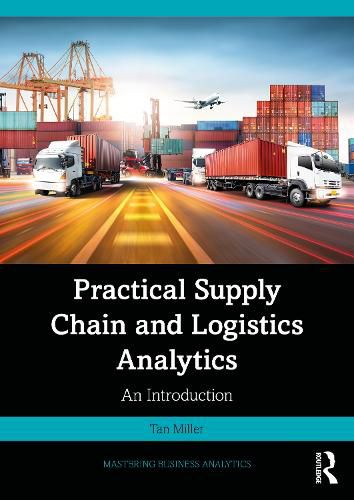Readings Newsletter
Become a Readings Member to make your shopping experience even easier.
Sign in or sign up for free!
You’re not far away from qualifying for FREE standard shipping within Australia
You’ve qualified for FREE standard shipping within Australia
The cart is loading…






Practical Supply Chain and Logistics Analytics provides essential analytical techniques for managing distribution, transportation, inventory, manufacturing, network design, customer logistics and procurement across the supply chain.
This book delivers practical decision-analysis methodologies that supply chain professionals can immediately implement in their daily operations. Readers will gain a working knowledge of fundamental logistics analytical methods that offer critical quantitative perspectives for better decision-making. The text presents a comprehensive range of techniques with step-by-step guidance, real-world examples, and actionable insights that bridge theory and practice. Each chapter builds analytical competency through accessible explanations and implementable frameworks, enabling professionals to address specific logistics management challenges efficiently while developing their quantitative skill set for long-term career advancement.
University lecturers will find it complements traditional supply chain textbooks and can also serve as the primary text for a first supply chain analytics class, while logistics professionals at all levels can use it as a reference guide for developing analyses to address specific management decisions.
$9.00 standard shipping within Australia
FREE standard shipping within Australia for orders over $100.00
Express & International shipping calculated at checkout
Practical Supply Chain and Logistics Analytics provides essential analytical techniques for managing distribution, transportation, inventory, manufacturing, network design, customer logistics and procurement across the supply chain.
This book delivers practical decision-analysis methodologies that supply chain professionals can immediately implement in their daily operations. Readers will gain a working knowledge of fundamental logistics analytical methods that offer critical quantitative perspectives for better decision-making. The text presents a comprehensive range of techniques with step-by-step guidance, real-world examples, and actionable insights that bridge theory and practice. Each chapter builds analytical competency through accessible explanations and implementable frameworks, enabling professionals to address specific logistics management challenges efficiently while developing their quantitative skill set for long-term career advancement.
University lecturers will find it complements traditional supply chain textbooks and can also serve as the primary text for a first supply chain analytics class, while logistics professionals at all levels can use it as a reference guide for developing analyses to address specific management decisions.